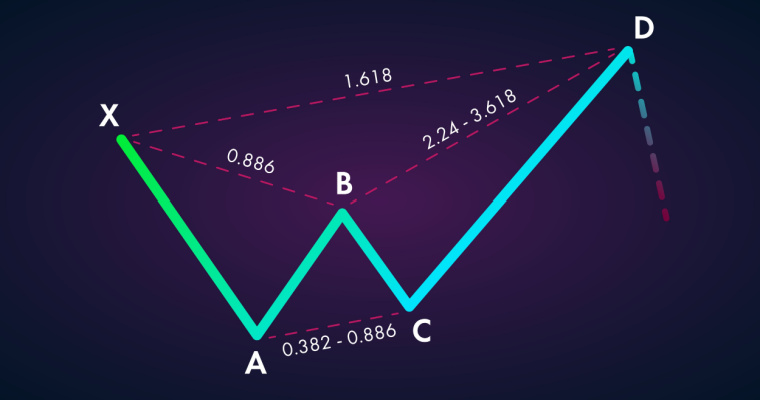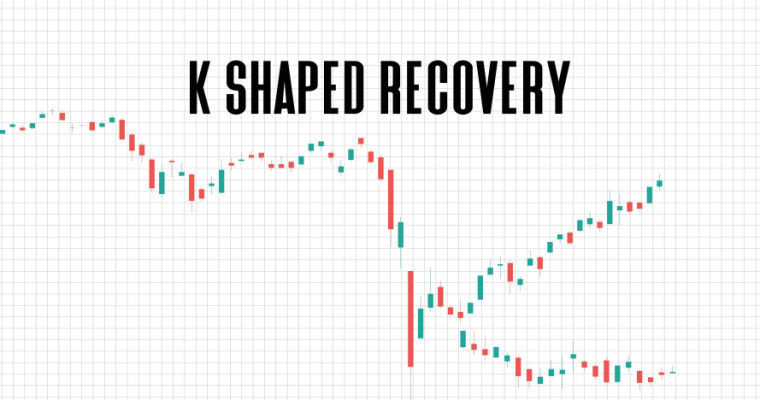What Is A Lot Size, Meaning And How Are They Decided?

Lot Size is a rule levied by SEBI defining the number of shares you can purchase at one time. SEBI has standardised everything related to trading where trade rules are predetermined and should be followed accordingly. Every company registered with the National Stock Exchange must adhere to the lot size rule. It helps SEBI and NSE keep the stocks’ trading and price under control.
What is a Lot Size?
In layman’s terms, lot size refers to the number of products you order with one transaction. The same logic is used in the stock market trade. Let’s elucidate it with an example. Suppose you purchase shares of the entity that is listed at NIFTY 50. SEBI predetermines the lot size for each index share. Here the fifty is the NIFTY lot size of the entity that you are allowed to purchase at any given time. The value of an individual share will be listed in the options derivative contract. If the value of the share is 100, then the total value of your transaction will be 50*100= Rs. 5000.
The lot size and their options contract value vary from entity to entity. SEBI has also determined lot size for every entity in the future and options trading.
Lot Size in Options Trading
The Lot Size is a financial instrument when making the stock exchange. While making the transaction in the stock market, lot size is the number of the shares you sell or purchase in a single transaction. In options trading, it is referred to as the number of contracts each entity has secured in one derivative.
Also Read: What Is Options Trading And How Does It Work?
How are Lot Sizes in Future and Options Trading Decided?
Future and options refer to the contracts signed by the interested parties in the share market. These contracts are used to derive the value of the derivatives. As a result, the derivates are also known as underlying assets. Shares, commodities, ETFs, stocks, and market indices form the underlying assets. Contracts aid traders in eliminating the future risk of already setting the stock price. The volatility of the market provides something tangible for the traders.
Earlier even though the contracts were signed by both the parties, the lot size of shares and value were determined by the one party. This resulted in an enormous gap in the prizes and one-party incurring losses. In the beginning, the value of the future and options lot sizes was set at Rs. 2 Lacs for the notional value. At that time, the lot size of shares was also determined by regulators so that their notional value would not go above Rs. 2 Lacs. It also controlled speculative trading, where retailers did not participate aggressively.
SEBI constantly monitors the situation to keep everything under control. In 2015 people started to participate in trading activity, as their income increased and they were grated with more power in the purchase. SEBI, after analysing,, increased the notional value from Rs. 2 lacs to Rs. 5 lacs. The Future and options list was also determined, keeping its value around Rs. 7.5 Lacs. Still, the entities have full autonomy over the lot size numbers and the derivative price. After the SEBI’s regulation, they can not increase it over Rs. 5 to 10 Lacs.
Following is the tabular representation of the latest lot size revision done by SEBI.
| Lot Size Modification | Number Of F&O Stocks | Effective Date And Expiry |
| Lot Size Modified Downwards | 34 Stocks | Effective October 29, 2021, For November Expiries And Later |
| Lot Size Pegged Upwards | 5 Stocks | Effective October 29, 2021, For January Expiries And Later |
| Lot Size Unchanged | 127 Stocks | Not Applicable |
| Revised Down (Not Multiple Of Old Lot Size) | 6 Stocks | Effective October 29, 2021, For January Expiries And Later |
Why are Lot Sizes Modified?
As a seminal governing body, SEBI always monitors everything in the share market. Once the SEBI notices a drastic change in the lot size that could lead to a significant increase in the future lot value, they revise the lot size. SEBI ensures that it maintains a balanced lot size through the modification to maintain the proper lot value.
Let’s elucidate with an example.
Suppose a company has a current lot size of 1000 derivatives. Their contractual value in the futures and options is Rs. 225. This would lead to the net lot value being Rs. 2.25 Lacs.
The transactional value will increase in the Future by the regulators. If it is increased to Rs. 620. Throughout this increase, the lot value will not change. It will still be 1000. So, the ultimate lot value will be Rs. 6.20 lacs. This is indicative of the huge deviation from the lot value listed with the SEBI. In such cases, SEBI directs the regulators to revise or modify the lot value in adhering to its rules. Rs. 300 is the value after the revision. This means the total lot value, in the end, will be Rs. 3 Lacs. which is not too deviating from the original lot value and is also indicative of the improved value of the derivative.
Purpose of Lot Sizes
- The main purpose of the futures and options is to bring standardisation in the lot size in the market. This helps SEBI to regulate the trading practices.
- Secondly, the futures and options lots have a secondary market. They function under the predetermined value and the time frame. Derivative contracts get expired every last Thursday of a month. At the time of the trade, you can refer to the catalogues that mention the tenure of each contract. It ranges from a month to three.
- The fixture of the lot sizes brings much-needed transparency to stock trading.
- And lastly, having a predetermined lot size helps standardise the stocks.
Also Read: What Is Futures and Options Trading And How To Invest In Them?
Final Word
It is understandable that the market is volatile. SEBI tries everything in its power to eliminate the risk factors involved in the market. Especially for the small-scale investors. Having fixtures in the lot size and the prices helps SEBI to stop speculative trading. It also helps investors by providing them with leverage over their trading options. Traders know beforehand how to increase their profit and minimise the risk by making an informed decision after analysing everything.
FAQs on Lot Sizes
Ans: All the financial decisions you make while investing or trading in the market are determined by your risk appetite. The lot size is the leverage you get and utilise to your benefit. Knowing the risk and the approximate profit you will get from making that transaction. If you wish to increase your profit, you should go with a bigger lot size as it increases your leverage. However, the bigger lot size means an increase in the risk factor.
Ans: In the share market, by the nature of trading, there are two types of market. One is the primary market, and the other one is the secondary market. When the company goes public, it issues Initial Public Offer or IPO. IPOs are part of the primary market as they are directly sold before they are listed. Once the IPOs are listed in the market, they are traded in the secondary market. The secondary market is similar to the other market where you trade any other type of commodity.
Ans: The lot size is the number of shares that can be sold in one transaction. It also allows the low lot size options. Meaning that it is also indicative of the lowest number of the share transaction that is to happen. This helps companies keep track of the shares sold at any given point. They can also determine the price quote easily without going back and forth referring to their numbers.
Ans: The lot size is the number of shares that you are allowed to purchase or sell of the company in the secondary market. You must have a Demat account to do any transaction related to the stocks or shares. It is mandatory as per the SEBI regulations.
Ans: For all the currencies in the world, including an Indian currency, the lot size is 1000 pairs. To trade the unit currency derivate, you need to trade a minimum of 1000 size, or only the multiples of 1000 are allowed. You can trade currency pair lot sizes at the NSE and BSE from Monday to Friday between 9 am to 5 pm.
Want to put your savings into action and kick-start your investment journey 💸 But don’t have time to do research? Invest now with Navi Nifty 50 Index Fund, sit back, and earn from the top 50 companies.
Disclaimer: Mutual Fund investments are subject to market risks, read all scheme-related documents carefully.
This article has been prepared on the basis of internal data, publicly available information and other sources believed to be reliable. The information contained in this article is for general purposes only and not a complete disclosure of every material fact. It should not be construed as investment advice to any party. The article does not warrant the completeness or accuracy of the information and disclaims all liabilities, losses and damages arising out of the use of this information. Readers shall be fully liable/responsible for any decision taken on the basis of this article.

Customer’s Feedback
No comments found.Illiquid Stocks Guide: Definition, Examples, and its Working
Illiquid stocks are part of a long-term investment strategy that is appropriate for investors who a... Read More »What is Shooting Star Candlestick Pattern in Trading?
The shooting star candlestick pattern is considered to be a bearish reversal candlestick ... Read More »What is VWAP Indicator and How to Use it for Trading
The VWAP indicator shows the volume-weighted average market price of a particular stock. You can us... Read More »What is Price Action Trading: Its Strategy, Stop Loss and Profit Targets
Price action trading is a methodology in which the trader solely relies on analysing a security’s... Read More »What is Buy the Dip Strategy in Trading – Working and Example
‘Buy the dip’ is one of the most common phrases in the stock market. It is sort of a go-t... Read More »What is the Black Scholes Model – Formula, Calculation and Assumptions
Among the important concepts in modern financial theory, the Black Scholes model, developed in 1973... Read More »What is Iron Condor and What are its Strategies?
Iron Condor is an options trading strategy that involves four options with the same expiration date... Read More »What is Harmonic Pattern and How Does it Help in Trading?
Harmonic patterns are one of the most efficient and effective trading patterns. Although they are m... Read More »What is a Contract Note and Why is it Important?
Contract note is a legal document containing the details of every stockbroker's trade on a stock ex... Read More »What is K-shaped Recovery: Indication, Example and
Economies go through multiple phases in business cycles. One such phase is a recession which is mar... Read More »Guide to Book Building – Its Types, Benefits and Process
Initial public offerings (IPOs) are priced as specified by their underwriters. The process by which... Read More »Support and Resistance in Trading: Working, Strategies, Uses and Example
Support and resistance are two of the most significant and practical concepts in technical analysis... Read More »Top 10 Chit Fund Schemes in India in 2023
Chit funds are one of the most popular return-generating saving schemes in India. It is a financial... Read More »10 Best Gold ETFs in India to Invest in April 2023
Gold ETFs or Gold Exchange Traded Funds are passively managed funds that track the price of physica... Read More »10 Best Demat Accounts in India for Beginners in 2023
Creation of Demat accounts revolutionised the way trades were conducted at the stock exchanges. It... Read More »20 Best Index Funds to Invest in India in April 2023
What is an Index Fund? An index fund is a type of mutual fund or exchange-traded fund (ETF) that... Read More »Best Arbitrage Mutual Funds to Invest in India in April 2023
Arbitrage funds are hybrid mutual fund schemes that aim to make low-risk profits by buying and sell... Read More »10 Best SIP Plans in India to Invest in April 2023
What is SIP? SIP or Systematic Investment Plan is a method of investing a fixed amount in ... Read More »10 Best Corporate Bond Funds in India to Invest in April 2023
Corporate bond funds are debt funds that invest at least 80% of the investment corpus in companies ... Read More »10 Best Bank for Savings Account in India [Highest Interest Rate 2023]
Savings account is a type of financial instrument offered by several banks. It lets you safely depo... Read More »






























